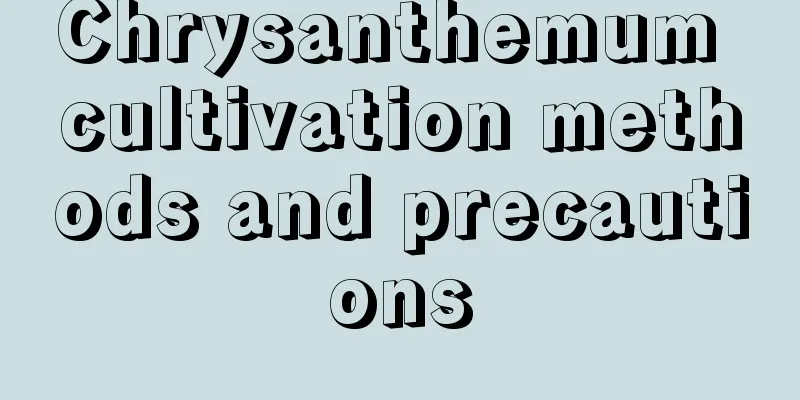Chrysanthemum cultivation methods and precautions

1. SoilTo grow chrysanthemums, you need soil with high nutrient content and strong drainage ability. Generally, you can mix leaf mold, sandy soil and fertilizer cake residue in a ratio of 6:3:1. After preparation, you can add a little vinegar to lower the pH value of the soil, making it more conducive to the growth of chrysanthemums. 2. WaterWhen watering chrysanthemums, water them when the soil is dry and then wet, not half dry and half wet. In addition, it is important to drain the accumulated water in the soil in time during the rainy season, otherwise it will easily cause root rot. 3. LightingAs a typical short-day plant, chrysanthemum does not need too much light to bloom. On the contrary, if the light time is too long, it will only grow leaves but not bloom. Except for the flowering period, the time for sun exposure can be slightly longer at other times. 4. TemperatureChrysanthemum likes coolness and is slightly cold-resistant. The suitable temperature for its growth is 18-21℃. The highest temperature in summer cannot exceed 32℃, and the lowest temperature in winter cannot be lower than 10℃. The temperature should not be lower than 17℃ when it just starts to bloom, and it can drop to 15-13℃ in the middle and late stages of the flowering period. 5. Notes1. Change the pot every year. After one year of growth, the nutrients in the soil in the chrysanthemum pot are basically consumed. At this time, you should replace it with new potting soil with sufficient nutrients. Repotting is usually done in spring. 2. Prune in time. During the chrysanthemum seedling stage, the side buds need to be cut off to reduce nutrient consumption. When the buds first begin to form, you should choose to cut off the unnecessary buds to increase the amount of nutrients available to the remaining buds, making the flowers that bloom larger and brighter. |
<<: Hyacinth cultivation methods and precautions
>>: Mint cultivation methods and precautions
Recommend
How to propagate the money tree succulent and what to pay attention to
How to propagate the money tree succulent The mai...
What are the cultivation methods and precautions of goldfish flowers?
Goldfish flower cultivation method Goldfish flowe...
Selection of rootstock for grafting lollipop rose (grafting rose with Rosa rugosa as rootstock)
The lollipop rose is actually a small tree rose, ...
How to propagate the raindrops
Propagation of the raindrops by division As the r...
Growing environment conditions and characteristics of Polygonum multiflorum
Growing environment conditions and requirements o...
What is the symbolic meaning of bamboo?
Representative of backbone In ancient times, peop...
Potted grape planting methods, planting techniques and management
1. Planting method 1. Choose a pot: When planting...
Pepper planting conditions, growth conditions and environment
Introduction to Sichuan Pepper Zanthoxylum bungea...
How to grow succulents in autumn
1. Watering Usually you can water more in autumn....
How to preserve ginkgo seeds and what is the probability of survival
1. Storage method The common storage method for g...
Which month is suitable for planting konjac?
When to plant konjac Konjac is more suitable to b...
What is the best month to plant lentils?
When to plant lentils Green beans are generally p...
How to grow and water succulent plants
1. Lighting Succulents like sunlight, so they nee...
In which month does plum blossom layering usually take place? High-pressure propagation method for plum blossoms
1. Layering time The time for layering plum bloss...
Cultivation methods and precautions of Songchunhua
How to grow spring flowers soil The spring flower...









